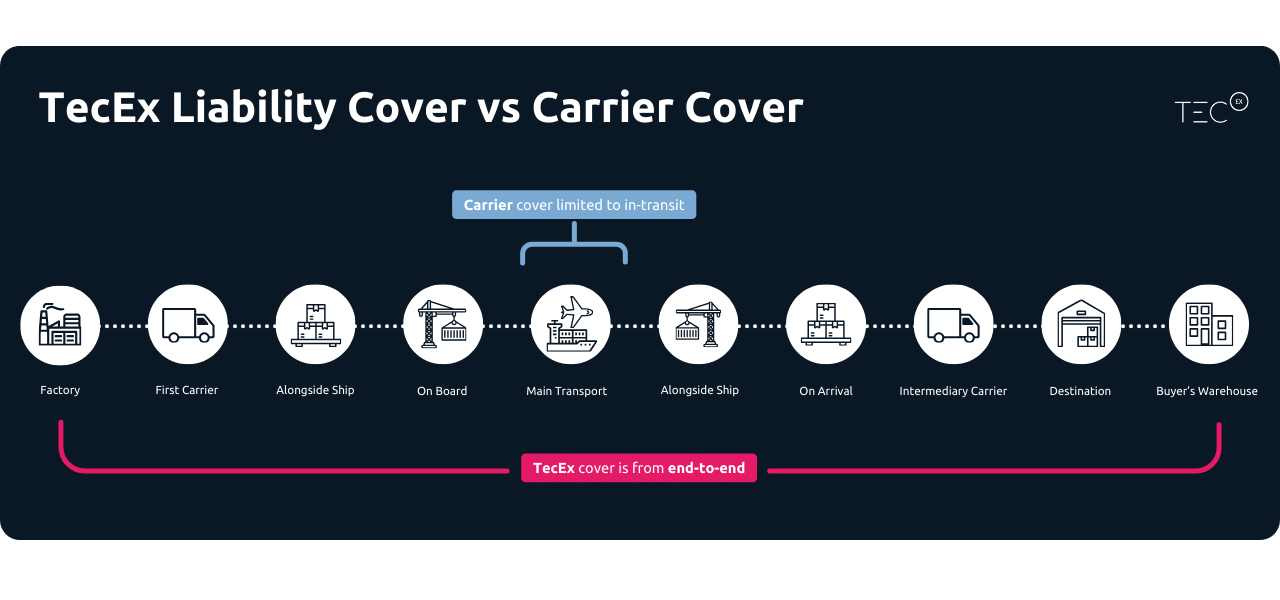What is Cargo Damage
Cargo Freight makes up about 80% of supply chain logistics and forms the backbone of international trade. Getting your goods to the desired country in one piece is essential to sustaining a good reputation and on-time delivery to end-users. With the aid of an Importer of Record, navigating complex customs clearance and damaged shipments becomes a thing of the past, as the IOR will ensure your high-value tech goods arrive safe, sound, and damage-free every time.
The Importer of Record removes the stress of cargo damage, but understanding how it fits into the logistical landscape is still essential for a complete and holistic view of global shipping.
Simply put, cargo damage is any form of impairment to items inside the cargo hold when being transported. Universally, we can classify cargo damage to include:
Physical Damage
Physical damage occurs when the items being shipped break. This includes cracks, dents, or scratches on the shipped equipment.
Contamination Damage
Contamination occurs when chemicals and other pollutants enter the cargo, damaging shipped items.
Infestation Damage
Infestation damage is caused when pests, primarily insects, infest containers and cargo.
Reefer Damage
Reefer damage refers to refrigerated items and is likely to occur during power outages. It leads to spoilage of the items inside the cargo.
Water Damage
Water damage is caused when items inside the cargo are exposed to water, this being seawater or moisture.
Causes and Prevention of Cargo Damage
Improper handling and loading of the shipped items, inadequate packaging of materials used for protection, environmental factors such as poor weather conditions, and transportation risk are all causes of cargo damage, which can result in physical contamination, infestation, reefer, or water damage.
Cargo damage can occur at any part of the importation process, making packaging crucial when importing and exporting goods. This is particularly important when shipping high-cost, delicate products like GPUs, which require specifically designed packaging to ensure the goods arrive in one piece. Therefore, awareness of cargo damage and its impacts is the first component of prevention.
The Impact of Cargo Damage
Cargo damage significantly impacts businesses exporting and importing goods worldwide. If the correct safeguards are not implemented, including proper packaging, insurance, and IOR assistance, the logistics of getting tech from point A to point B can quickly become unmanageable. This goes beyond the immediate loss of the shipped goods and includes financial setbacks, logistical delays, and damaging reputations due to delayed goods.
Financial Setbacks
The first effect of cargo damage is financial loss, as goods need to be replaced. These costs could be substantial for parties importing tech, as the goods are all high-value items. Replacing or replenishing tech goods can be costly if no adequate Liability Cover or prevention methods are implemented.
To get peace of mind, calculate your risk now and get shipping with TecEx
Logistical Delays
If cargo damage occurs, goods may need to be replaced or repaired, resulting in delivery delays and potential financial penalties. These delays have a ripple effect on the supply chain and lead to further issues later on, such as supply shortages. For example, the tech required for data centers is time-sensitive. Any delays in the shipment can disrupt the entire process, causing downstream activities to come to a halt.
Depletion of Reputation
Delayed or damaged goods will also most likely impact reputation and relationships. Goods not received in perfect condition or taking longer to be delivered than originally planned can lead to disappointment, lost clients, a poor industry-wide reputation, and a lack of trust from the parties receiving the items.
Mitigating the Risks of Cargo Damage
It is important to take all the necessary steps to avoid cargo damage. Various measures to reduce the risk of cargo damage include using effective cushioning and packaging, ensuring adequate temperature controls, having the correct distribution and weight planning, and investing in cargo insurance. Any form of liability coverage is highly recommended, especially when importing expensive tech equipment. You do not want to face the financial risks of something going wrong during transportation; thus, covering your imported items is vital.

TecEx Liability Cover
If goods are damaged, TecEx provides your global Door-to-Door Liability Cover – a must-have for peace of mind. It covers everything from pick-up to final delivery, no matter the mode of transport. This added layer of protection is tailored to meet any importer’s specific needs and relieve that added stress. It provides any business with comprehensive protection, ensuring that financial and reputational damage does not occur.
Warehouse Solution
Having the appropriate container and ensuring accurate warehousing is vital for importers to store and manage goods effectively. Not all importers have physical warehouses in their required destination, adding another hurdle for companies wanting to import. TecEx is aware of this challenge and offers long- and short-term storage through its warehousing facilities in America, the Netherlands, and the United Kingdom, making sure goods are safely stored and can get to their desired location.
Key Takeaways
Cargo damage is not just a hassle but a considerable risk to the supply chain. The consequences of cargo damage can be detrimental, from financial setbacks to damaged reputations to logistical nightmares. Understanding the causes of these damages and how to limit them through liability coverage will lower these risks.
Be proactive and protect your Cargo to minimize your losses, secure future success, and streamline operations.



